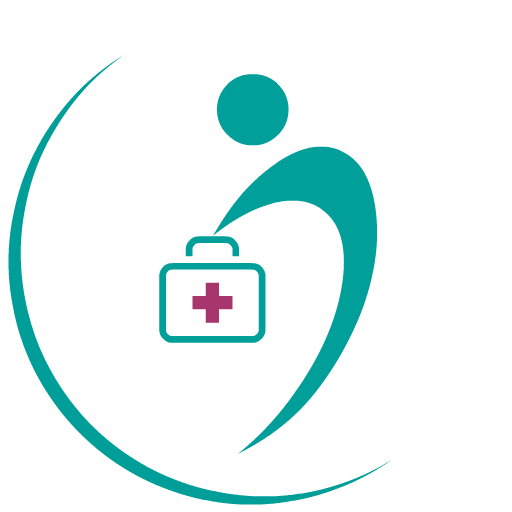Obstructive Sleep Apnea (OSA) is a sleep disorder characterized by repetitive episodes of partial/complete upper airway obstruction during sleep.
Understanding Obstructive Sleep Apnea: Causes, Symptoms, and Treatments
Obstructive Sleep Apnea (OSA) is a prevalent sleep disorder characterized by repetitive episodes of partial or complete upper airway obstruction during sleep. These interruptions in breathing can lead to disrupted sleep patterns and result in various health complications if left untreated.
In this blog, we'll explore the origins, indications, diagnosis, and treatment options for OSA to provide a comprehensive understanding of this condition.
Obstructive Sleep Apnea occurs when the muscles at the back of the throat relax excessively during sleep, causing the airway to narrow or close. This obstruction leads to pauses in breathing, known as apneas, or significant reductions in airflow, termed hypopneas. The brain, sensing a drop in oxygen levels, briefly arouses the individual from sleep to reopen the airway, often accompanied by choking or gasping sensations.
Causes and Risk Factors
Several factors contribute to the development of Obstructive Sleep Apnea, including:
Obesity: Excess fat deposits around the neck and throat can increase the likelihood of airway obstruction.
Anatomical factors: Enlarged tonsils, a thick neck circumference, or a narrow airway may predispose individuals to OSA.
Age: OSA becomes more common as individuals age due to changes in muscle tone and weight distribution.
Gender: Men are up to four times more likely than women to have obstructive sleep apnea, but women have a higher likelihood of experiencing it during pregnancy and post-menopause. As women age, the gender disparity decreases, especially after menopause.
Family history: Genetics may play a role in the development of OSA.
Smoking and alcohol consumption: These factors can contribute to airway inflammation and relaxation of throat muscles, exacerbating OSA symptoms.
Symptoms
The signs and symptoms of Obstructive Sleep Apnea can vary in severity and may include:
Loud snoring: Often the most noticeable symptom, especially if accompanied by gasping or choking sounds.
Excessive daytime sleepiness: Despite spending a seemingly adequate amount of time in bed, individuals with OSA may still feel tired during the day.
Morning headaches: Due to fluctuations in oxygen levels and disrupted sleep patterns.
Difficulty concentrating: Impaired cognitive function and memory problems may arise due to poor sleep quality.
Irritability: Mood disturbances are common among individuals with untreated OSA.
Nighttime awakenings: Frequent awakenings throughout the night may be a sign of OSA.
Diagnosis
A comprehensive evaluation is necessary to diagnose Obstructive Sleep Apnea accurately. This typically involves:
Clinical assessment: A healthcare provider will review the individual's medical history, symptoms, and risk factors for OSA.
Sleep study (polysomnography): This overnight test monitors various physiological parameters during sleep, including breathing patterns, oxygen levels, heart rate, and brain activity.
Home sleep apnea testing: In some cases, portable devices can be used to diagnose OSA in a home setting, though they may be less comprehensive than in-lab polysomnography.
Treatment Options
Effective management of Obstructive Sleep Apnea aims to alleviate symptoms, improve sleep quality, and reduce the risk of associated health complications.
Treatment modalities include
Continuous Positive Airway Pressure (CPAP): This therapy involves wearing a mask connected to a machine that delivers a constant stream of air, keeping the airway open during sleep.
Oral appliances: Custom-fitted dental devices can help reposition the jaw and tongue to prevent airway obstruction.
Lifestyle modifications: Weight loss, smoking cessation, and reducing alcohol consumption can all contribute to symptom improvement.
Surgical intervention: In cases of severe OSA or anatomical abnormalities, surgical procedures such as uvulopalatopharyngoplasty (UPPP) or mandibular advancement surgery may be considered.
Frequently Asked Questions (FAQs)
Can Obstructive Sleep Apnea be cured?
While certain interventions can effectively manage OSA symptoms, there is no definitive cure. Treatment typically focuses on reducing the severity of symptoms and improving quality of life.
Is snoring always a sign of Obstructive Sleep Apnea?
Not necessarily. While loud and persistent snoring is a common symptom of OSA, not all individuals who snore have the condition.
You can consult Doctors in DocSmart app , if snoring is accompanied by other OSA symptoms.
Can children develop Obstructive Sleep Apnea?
Yes, children can experience OSA, often due to enlarged tonsils or adenoids. Symptoms may differ from those seen in adults and can include bedwetting, behavioral issues, and poor academic performance.
What are the potential complications of untreated Obstructive Sleep Apnea?
Untreated OSA can increase the risk of various health problems, including hypertension, cardiovascular disease, type 2 diabetes, and stroke. It can also impair daytime functioning and increase the likelihood of accidents or injuries.
Are there alternative treatments for individuals who cannot tolerate CPAP therapy?
Yes, oral appliances and surgical options are available for those who cannot tolerate CPAP or prefer alternative treatments. These interventions should be discussed with a healthcare provider to determine the most appropriate course of action.
Conclusion
Obstructive Sleep Apnea is a common sleep disorder with significant implications for both physical and mental health.
Recognizing the symptoms and seeking timely diagnosis and treatment are crucial steps in managing this condition effectively. By understanding the causes, symptoms, and available treatment options, individuals can take proactive steps towards better sleep and overall well-being.
Blogs
Stay connected to health experts and read what they have to say via DocSmart.
Please sign up to create your own blog





